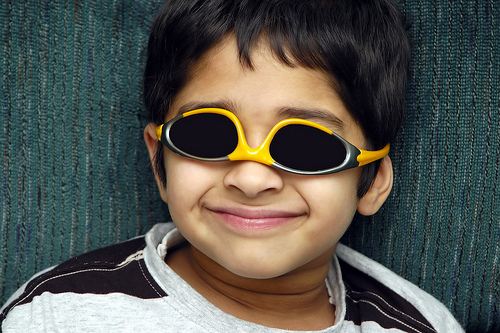November 18th, 2015

Dental visits are often negatively associated with discomfort in many people’s minds. But at Sidney D. Kelly, DMD Family and Cosmetic Dentistry, Drs. Sidney and Jacob Kelly and our team have created an atmosphere focused on dispelling those myths. Our team is truly passionate about dentistry, and we are trained to gently accommodate each individual patient’s needs, with every procedure and visit performed with the utmost focus on your comfort.
If you are a patient of record at Sidney D. Kelly, DMD Family and Cosmetic Dentistry, we are committed to your oral health and are available to you. If you would like to learn more about stress-free dentistry at our Roseville, CA office, or to schedule an appointment, we encourage you to give us a call!
November 11th, 2015

Many parents worry that their children’s teeth are not falling out on time. A lot of concerned parents want to know: When will my child lose his or her first baby tooth? At what age should the last tooth fall out? Is there a specific order in which the teeth are lost?
Drs. Sidney and Jacob Kelly and our team explain that a child's 20 baby teeth (primary teeth) typically come in by age three and begin to loosen and fall out on their own to make room for permanent teeth, which usually appear by the time your child is six. It is important to know that timing may vary, and girls typically lose their baby teeth earlier than boys. The last baby teeth will likely fall out by the time your child is 13.
So, which teeth do children lose first? Baby teeth tend to fall out in the order in which they came, which means the lower center incisors are usually the first to go when your child is between six and seven years old. The next teeth your child will lose are his or her top center pair, also called the upper central incisors.
It’s important to note that if a child loses a baby tooth early as a result of decay or an unforeseen accident, his or her permanent tooth may erupt early and potentially come in crooked due to limited space. If your child suffers an injury or has tooth decay, we encourage you to give us a call to set up an appointment with Drs. Sidney and Jacob Kelly.
While we know some children couldn’t be more excited to lose their baby teeth, we know others are anxious about this childhood milestone. When your child starts to lose teeth, our team at Sidney D. Kelly, DMD Family and Cosmetic Dentistry encourages you to stress the importance of proper dental care on a daily basis.
Remember to:
- Remind your child to brush his or her teeth at least twice a day. Supervise and offer assistance as needed.
- Help your child floss his or her teeth at bedtime.
- Limit eating and drinking between meals and at bedtime, especially sugary treats and drinks, such as candy and soda.
- Schedule regular dental visits for your child every six months.
- Ask about the use of fluoride treatments and dental sealants to help prevent tooth decay.
To learn more about baby teeth, or to schedule your child's next visit with Drs. Sidney and Jacob Kelly at our Roseville, CA office, please give us a call today!
November 11th, 2015

It is common to experience dentine hypersensitivity, with symptoms ranging from moderate to severe. Why does it happen and how do you know if this sensitivity is something to be concerned about? The first step is to determine the cause.
The most common cause of the sensitivity is exposure of the dentin. Dentin is the layer immediately surrounding the nerve of the tooth. It is alive and usually covered by the gum tissue. When gum recession is present hypersensitivity is common. Other contributors to temporary tooth hypersensitivity include teeth whitening and dental procedures such as fillings, periodontal treatment, and braces placement or adjustment. These are temporary and should be of no concern.
Permanent hypersensitivity, however, may require treatment. To understand the cause of sustained hypersensitivity, let us explain the structure of dentin and why it serves as a ‘hot spot’.
The dentin contains a large numbers of pores or tubes that run from the outside of the tooth to the nerve in the center. When dentin tubes are exposed, there is a direct connection between the mouth and dental pulp, which houses the nerve and blood supply of the tooth. External stimuli, such as mechanical pressure (tooth grinding or clenching - bruising the ligaments holding the teeth in place), temperature changes, as well as chemical stimuli (sweet–sour) are transmitted to the pain-sensitive dental pulp and activate nerve endings. A short and sharp pain is the result. These external stimuli cause fluid movement in the open tube that is transmitted as pain sensations. Something needs to be placed into the dentin tube to plug it and stop this fluid movement.
The first step in doing something about dental hypersensitivity is to determine the cause; our professional team at Sidney D. Kelly, DMD Family and Cosmetic Dentistry can help you with this. Whether the sensitivity is due to exposed dentin or an underlying cause such as abscess or decay, corrective measures are needed. Contact us sooner rather than later so Drs. Sidney and Jacob Kelly can reduce the sensitivity, and provide you with some relief!
November 11th, 2015

Is your child nervous about visiting Drs. Sidney and Jacob Kelly and our team at Sidney D. Kelly, DMD Family and Cosmetic Dentistry? Today, we put together some tips to help ensure your little one relaxes before his or her next dental checkup!
- Start early. The earlier your child visits our Roseville, CA office, the better. This will provide your child with a familiarity and ensure that he or she is comfortable with our team, office, and surroundings, whether it’s for a preventive visit or an emergency. The American Academy of Pediatric Dentistry recommends that your child first visit the dentist at age one or when the first tooth is visible.
- Choose your words wisely. When preparing for a visit, go easy on the details. Over-explaining and adding more information about treatment such as a filling will lead to more questions as well as add unnecessary alarm. Remember to keep a positive attitude!
- Bring a distraction to your child’s appointment. Bringing along music is a great idea. Just plug in those earphones, have your child close his or her eyes, and get lost in the tunes. Listening to music can also be a pain killer.
- Consider a “pretend visit.” Before your child’s appointment, try role playing with him or her—you be the doctor and your child is the patient. All you'll need is a toothbrush. The key is getting your child familiar with the routine so that he or she is more relaxed once it’s time for the real visit with Drs. Sidney and Jacob Kelly.
- Stress the importance of good oral health. Instill in your child that visiting the dentist is a necessity, not a choice, and that visiting the dentist will lead to a lifetime of smiles.
We hope this helps! For more on dental anxieties, ask us during your next visit to Sidney D. Kelly, DMD Family and Cosmetic Dentistry! Or, ask us on Facebook!




